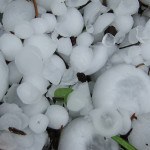A 2010 explosion that killed two workers at a former Horsehead Corp. zinc oxide plant in western Pennsylvania was caused by recurring problems with a sump system that the company failed to address, the U.S. Chemical Safety Board reported.
“Human factors played a dominant role” in the explosion at the plant near Monaca, about 30 miles northwest of Pittsburgh, according to the report by William H. Hunter, a British metallurgist hired to study the blast.
In reference to the system meant to drain the volatile chemical from a distillation column, Hunter said, “In short, because of a history of column blockage and explosions at the Monaca facility, hazardous conditions had been `normalised.”‘
James Taylor, 53, of Aliquippa, and Corey Keller, 41, of Newell, West Virginia, died of smoke inhalation from the flash fire and explosion July 22, 2010. The plant has since closed.
The chemical board doesn’t have the power to fine or cite businesses, but investigates accidents so lessons can be passed on to manufacturers, unions and government regulators designed to prevent similar incidents.
“We felt it was important to finally determine why this tragedy occurred,” said board Chairman Rafael Moure-Eraso. “Our hope is that this will at last provide a measure of closure to family members, as well as inform the safety efforts of overseas companies using similar production methods.”
The company filed a four-page objection letter to the report, which was issued Wednesday, saying the scientist didn’t visit the site or personally inspect the debris.
“Generally speaking, I guess the report really reflects an opinion based on the file review rather than a review of the evidence involved or a site visit,” Ali Alavi, Horsehead’s senior vice president of corporate affairs, said Thursday.
“We completely reject the notion that any kind of hazardous operating condition was ‘normalized”‘ at the plant, Alavi said.
Earlier investigations by the chemical board and the federal Occupational Safety and Health Administration were “inconclusive as to the root cause,” Alavi said.
OSHA nonetheless collected $42,000 in workplace safety fines from Horsehead after the blast, after first seeking $45,000 in penalties.
The plant used an indoor distillation column several stories tall to burn off impurities from liquid zinc. When the sump drain at the bottom of the column backed up, a “hazardous condition” resulted from more liquid zinc in the column than normal. The column walls failed, and the flammable “zinc spray and vapor now had access to large amounts of workplace air and this created a massive zinc flame across the workplace,” the report found.
The particular technology, invented in the 1920s and used for decades thereafter, is no longer used in the United States, although it is used in China and other overseas plants.
Alavi said the plant shut down at the end of 2013 and the rest of the operation closed in April.
Shell Chemical LP in November exercised its option to buy the property, which it hopes to convert to a petrochemical plant though that hasn’t been finalized, and the sale has yet to close.
Was this article valuable?
Here are more articles you may enjoy.

 Report Using Aerial Imagery Keys in on Hailstorm Risks to Colorado Homes
Report Using Aerial Imagery Keys in on Hailstorm Risks to Colorado Homes  Gallagher: Global Insured Natural Disaster Claims Again Dominated by Severe U.S. Storms
Gallagher: Global Insured Natural Disaster Claims Again Dominated by Severe U.S. Storms  Supplemental Claims Don’t Need to Include Damage Estimates, Fed Appeals Court Says
Supplemental Claims Don’t Need to Include Damage Estimates, Fed Appeals Court Says  Report: Claims Handlers Embracing Technology
Report: Claims Handlers Embracing Technology 